SPECworkstation 3.0.2 Storage Benchmark
SPECworkstation benchmark is an excellent benchmark to test systems using workstation-type workloads. In this test, we only ran the Storage component, which is fifteen separate tests.
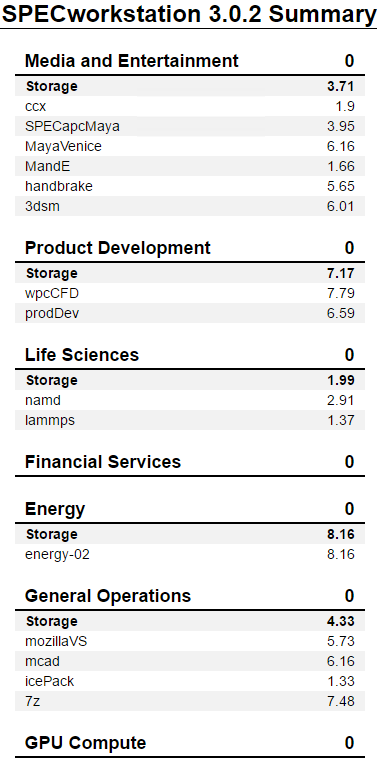
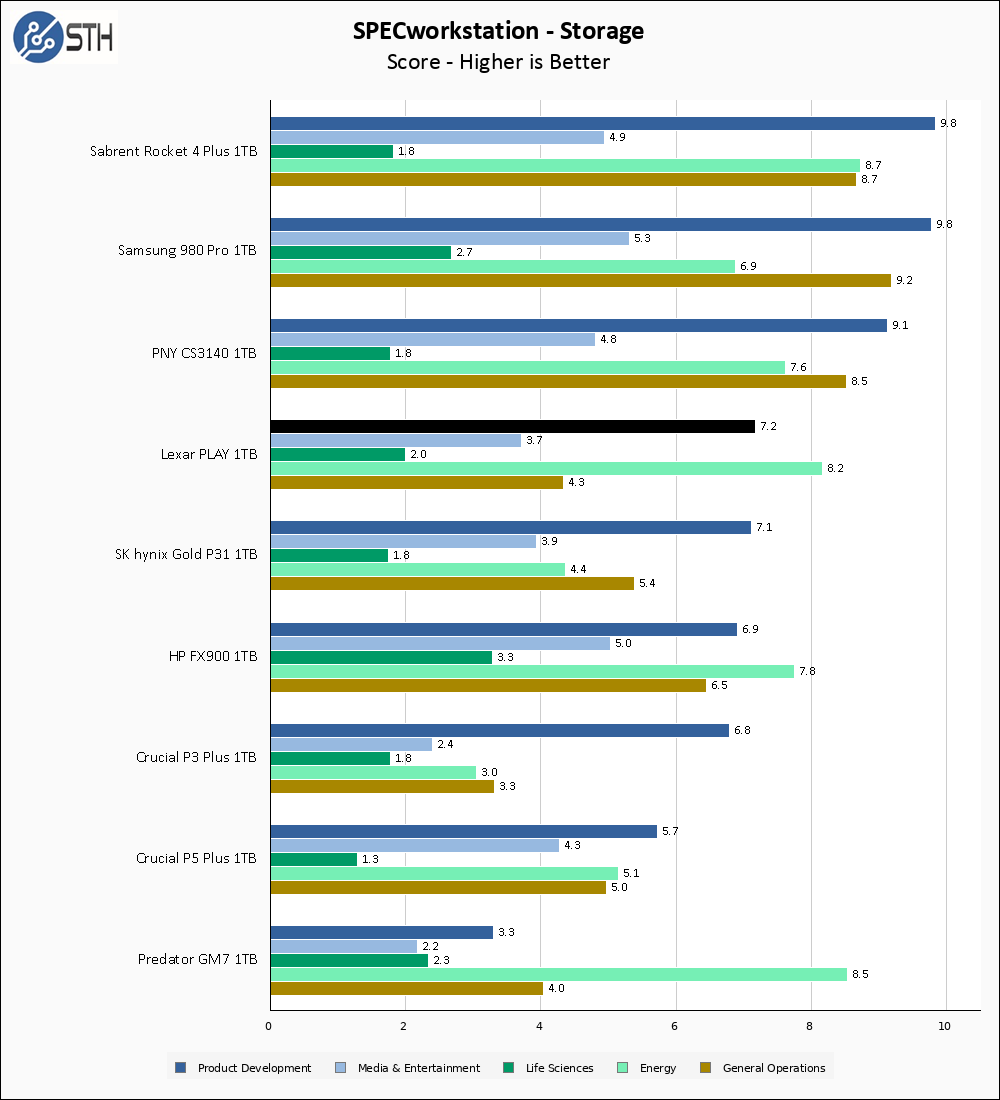
The PLAY 1TB is not targeted at workstation workloads, but nevertheless, it performs well in SPECworkstation. Solid middle-of-the-pack performance is a win for the tiny 2230 drive.
Sustained Write Performance
This is not necessarily a benchmark so much as trying to catch the post-cache write speed of the drive. While I am filling the drive with data to the 85% mark with ten simultaneous write threads, I monitor the drive for the write performance to dip to the lowest steady point and grab a screenshot.
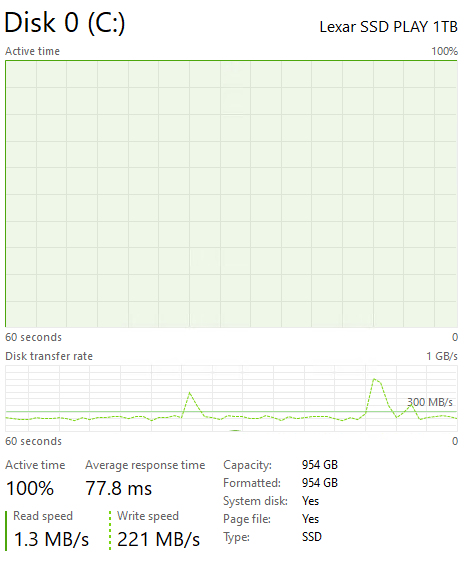
Usually when I fill up a drive and take this screenshot, at some point the drive normalizes on a write speed and holds it for the rest of the drive fill. However, the Lexar PLAY bucks this behavior, as after a significant period of time spent around 220 MB/s, it suddenly sped up and held the higher speed for a while. For the rest of the drive fill, write speed would bounce between 220 MB/s and 800 MB/s. As a result, I have a second screenshot for you.
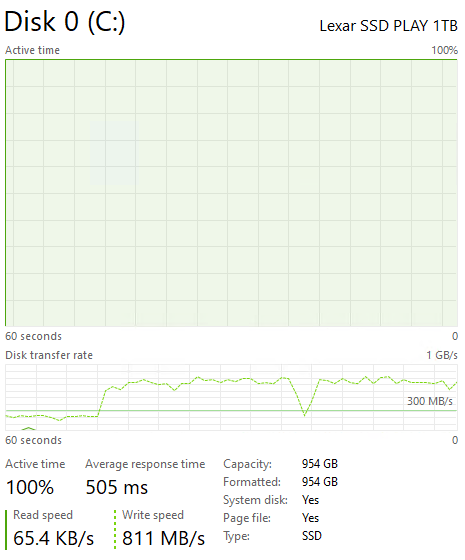
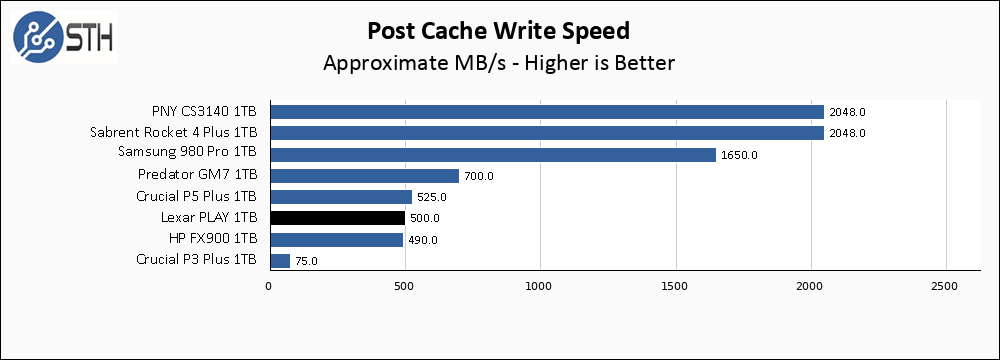
Since this drive has essentially two terminal write speeds that it bounces between, I just picked a number in the middle. Given the target audience of this drive, Steam Deck users and such, this result is more than acceptable even if the drive bottomed out at 220 MB/s and held there.
Temperatures
We monitored the idle and maximum temperature during testing with HWMonitor to get some idea of the thermal performance and requirements of the drive.

The PLAY 1TB can get very hot; mine reached 84C. Given that this drive is a 2230-sized drive, I also had to MacGyver a cooling solution, but I was able to get it working in one of my heatsinks. All benchmarks were performed with the heatsink mounted to keep temperatures under control. In an average gaming scenario, this drive is unlikely to hit such high temperatures, as it took a significant, sustained load to peak this high.
Final Words
The Lexar PLAY 1TB is $85 at the time of this review. There are other 1TB 2230-sized drives out there, but I have not reviewed the rest of them (although several are inbound.) With that said, the PLAY 1TB seems to exist in a pretty decent price point, as most of the drives that are less expensive than the PLAY, such as the Silicon Power UD90 or the Corsair MP600 CORE Mini, use QLC and have lower rated performance. Drives like the Sabrent Rocket 2230 and the WD SN770M offer competitive performance, but they each cost a bit more than the PLAY.
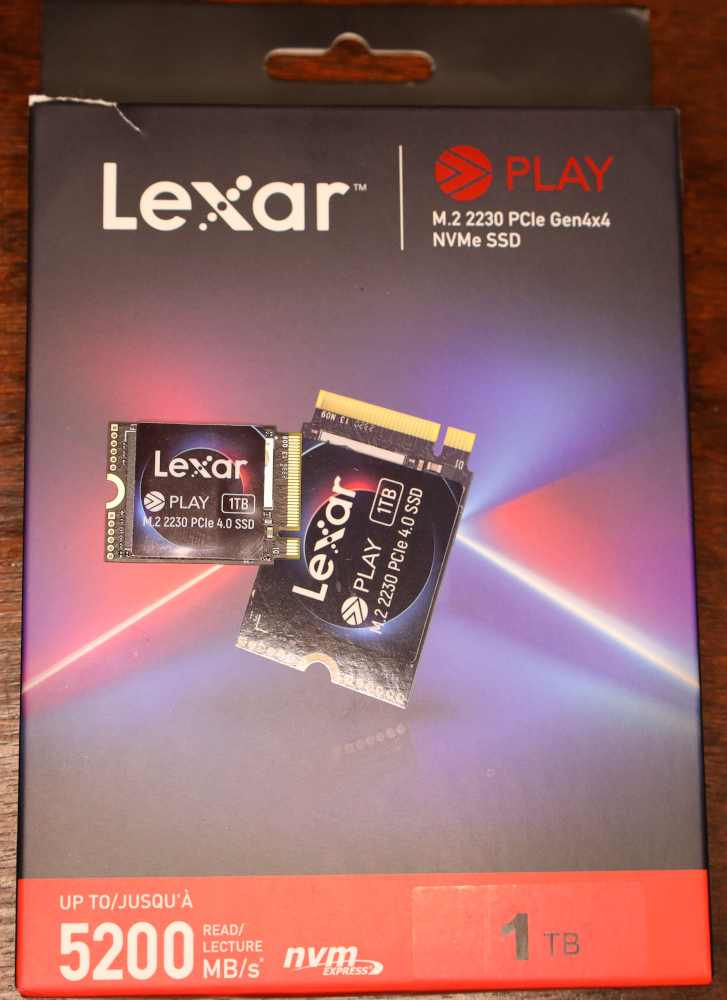
Lexar is not a name brand that I suspect many folks out there think of when it comes to SSDs, but they have quietly been building a respectable portfolio of drives. The PLAY 1TB is a worthy addition to that lineup, and if you have a 2230-sized slot in your device, the PLAY is deserving of your consideration.
Where to Buy
If you are looking for the drive, here is an Amazon affiliate link to the listing.
Please note we participate in various affiliate programs and may earn a small commission if you purchase through these links.




Dell has switched to 2230-sized SSDs in their laptops recently too. It’s such a pain to accommodate all the different form factor sizes these days. 2280, 2260, 2250, 2230, plus all the E1L E1S, etc. It was great when everyone agreed to the 3.5mm standard. I know we need something smaller, but there are just too many versions now. Hope they don’t make the same mistake with the new DDR5 laptop memory format.
I believe we have at least 3 more 2230 sized drives incoming for reviews in the future.
Personally, I’m hoping they make 2230 Gen 5 x2 lane drives.
How realistic are the numbers in a real situation? Doesn’t the heat sink kind of destroys the test? In many, if not most places where a 2230 is used you don’t have the space for it.
I take it the 84 degrees were with the heat sink attached? That makes me wonder what happens when you put it under endured stress without a heat sink. Will it silently fail, or will it throttle?
84C was achieved without a heat sink. One was added to prevent any thermal throttling under testing. As I said in my review, though, temperatures only got up there under extreme load. Average use will not pose a problem.